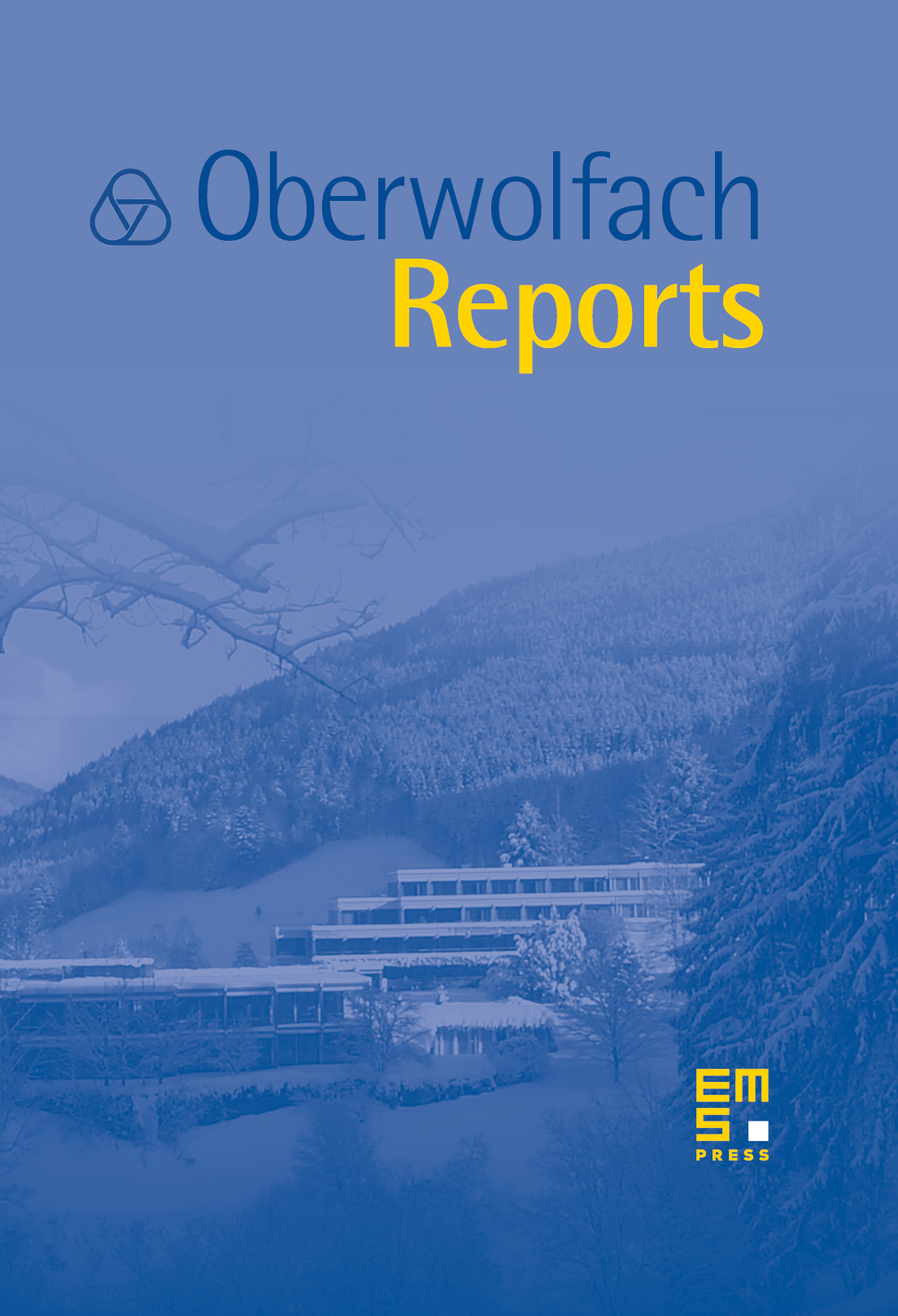Classical Algebraic Geometry
David Eisenbud
Mathematical Sciences Research Institute, Berkeley, USAJoseph Harris
Harvard University, Cambridge, USAFrank-Olaf Schreyer
Universität des Saarlandes, Saarbrücken, Germany

Abstract
The Workshop on Classical Algebraic Geometry was notable for a relaxed atmosphere (18 talks) and an abundance of young people. A wide variety of themes related to classical topics were discussed with a very modern point of view. Although it is tempting to summarize each of the talks, we limit ourselves to four highlights:
- There has been a great deal of interest in the question: are there structural characterizations of rational varieties in higher dimensions? Rationality itself is elusive: the notion of “rationally connected variety” (a variety where any two points can be connected by a rational curve) seems much more tractable. Brendan Hassett described work of his with Yuri Tschinkel showing that these varieties exhibit an analogue of a famous arithmetic property of quadrics: if a family of varieties has smooth rationally connected fibers, then given a collection of share at least some properties of quadrics in low dimensions. In many cases, a collection of “local sections” can be connected by a global section.
- A central theme of algebraic geometry is that the set of algebraic varieties of a particular kind often itself is naturallly an algebraic variety. It was classically assumed that such families would be generically nice in some sense. This has turned out not to be the case: to understand them, one must accept non-reduced components. The first examples of this phenomenon were given by David Mumford in a very famous paper. A second highlight of our conference was a re-interpretation and generalization of Mumford's example by Shigeru Mukai.
- A number of combinatorial and computational applications in algebraic geometry have recently come from what the statisticians have for a long time called the “max-plus” algebra—in algebraic geometry it now goes under the name “tropical”. Sean Keel showed off a new application of these ideas, found jointly with Paul Hacking and Eugene Tevelev: the “tropical fan” associated with certain toric varieties provides an extremely nice and natural compactification of these varieties. Among the remarkable classical examples that Keel gave is that of the moduli space of smooth cubic surfaces.
- Among the algebraic varieties of algebraic varieties, the moduli space of curves of genus and some of its variants is by far the most important, with applications ranging from string theory in physics (Witten) to new versions of resolution of singularities (de Jong). Constructions of Severi and others from the early part of the 20th century showed that for low genus () the moduli space is rational, and Severi believed that he had proved rationality for all genera. The error in his argument was soon found, and it has been an important problem to decide which moduli spaces were actually rational. The importance of this work comes as much from the technique involved—studying the divisor class group of the moduli space, which really means describing conditions on an algebraic curve that are locally given by just one equation—as from the results. At our conference Farkas spoke on a very far-reaching generalization of what was known systematically using syzygies to describe conditions on curves that lead to new divisors.
Cite this article
David Eisenbud, Joseph Harris, Frank-Olaf Schreyer, Classical Algebraic Geometry. Oberwolfach Rep. 3 (2006), no. 2, pp. 1615–1662
DOI 10.4171/OWR/2006/27